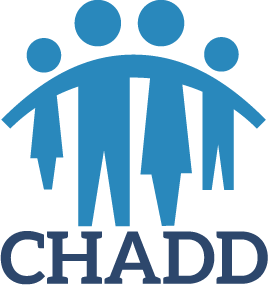ADHD Research News
New ADHD research studies referenced in this week's ADHD in the News:
- Hare, Carolynn, et al. “Sex and Intelligence Quotient Differences in Age of Diagnosis among Youth with Attention-Deficit Hyperactivity Disorder.” British Journal of Clinical Psychology (June 23, 2024): 1-19. DOI: 10.1111/bjc.12485.
- Referenced in “Symptoms, cognitive abilities, demographics tied to age of ADHD diagnosis (HealthDay, July 18, 2024)”
- McCabe, Sean Esteban, et al. “Adolescent Use, Diversion Sources, and Perceived Procurement Difficulty of Prescription Medications.” JAMA (July 24, 2024). DOI: 10.1001/jama.2024.12030.
- Referenced in “Big drop in US kids, teens misusing prescription meds (Medical Xpress, July 24, 2024)”
- Pecheva, Diliana, et al. “Sex and Mental Health Are Related to Subcortical Brain Microstructure.” Proceedings of the National Academy of Sciences 121, no. 31 (July 30, 2024): e2403212121. DOI: 10.1073/pnas.2403212121.
- Referenced in “New study links brain microstructure to gender differences in mental health (Medical Xpress, July 23, 2024)”
- Seppä, Sampo, et al. “Associations of Symptoms of ADHD and Oppositional Defiant Disorder (ODD) in Adolescence With Occupational Outcomes and Incomes in Adulthood.” Journal of Attention Disorders (June 12, 2024). DOI: 10.1177/10870547241259329.
- Referenced in “Comorbid ADHD and ODD Linked to Higher Rates of Unemployment, Lower Income (Psychiatry Advisor, July 19, 2024)”
- Skliarova, Tatiana, et al. “Psychoeducational Group Interventions for Adults Diagnosed with Attention-Deficit/ Hyperactivity Disorder: A Scoping Review of Feasibility, Acceptability, and Outcome Measures.” BMC Psychiatry 24, no. 1 (June 20, 2024): 463. DOI: 10.1186/s12888-024-05908-8.
- Referenced in “Feasibility, Acceptability, and Outcomes of Psychoeducational Group Interventions for Adults with ADHD (Physician's Weekly, July 24, 2024)”
Attention-Deficit/Hyperactivity Disorder in Children Ages 5–17 Years: United States, 2020–2022
NCHS Data Brief No. 499, March 2024
Data from the National Center for Health Statistics, National Health Interview Survey, 2020–2022, finds that 11.3% of children ages 5-17 in the U.S have ever been diagnosed with ADHD. See the breakdown by age group, race, ethnicity, family income, and insurance coverage at General Prevalence of ADHD.
Who Provides Outpatient Clinical Care for Adults With ADHD? Analysis of Healthcare Claims by Types of Providers Among Private Insurance and Medicaid Enrollees, 2021
Journal of Attention Disorders, March 18, 2024
This study from CDC researchers and CHADD PAB co-chair, Craig Surman, MD, finds that family practice physicians, psychiatrists, and nurse practitioners/psychiatric nurses were the most common providers for adults using employer-sponsored insurance, although the distribution of provider types varied across states. Lower percentages of adults with Medicaid received ADHD care from physicians. Approximately half of adults receiving outpatient ADHD care received ADHD care by telehealth.
ADHD medication and risk of cardiovascular diseases
Commentary by CHADD PAB member, Russell J. Schachar, MD, on Zhang et al. Attention-Deficit/Hyperactivity Disorder Medications and Long-Term Risk of Cardiovascular Diseases, JAMA Psychiatry, November 22, 2023.
Trends in Stimulant Prescription Fills Among Commercially Insured Children and Adults—United States, 2016-2021
Morbidity and Mortality Weekly Report, March 31, 2023
Centers for Disease Control and Prevention
Summary:
What is already known about this topic?
Prescriptions for stimulants, primarily used to treat attention-deficit/ hyperactivity disorder (ADHD), were increasing for adults before the COVID-19 pandemic. Policies enacted during the pandemic expanded access to prescription stimulants via telehealth.
What is added by this report?
The percentage of adolescent and adult females and adult males receiving prescription stimulant fills increased during 2016-2021, particularly during 2020-2021.
What are the implications for public health practice?
Growing recognition of ADHD in adults and increases in prescription stimulant fills raise questions about current adult ADHD care. Development of clinical recommendations for diagnosing and managing adult ADHD could help guide safe and appropriate stimulant prescribing. Evaluation of policies enacted during the pandemic could identify benefits and harms of those policies.
